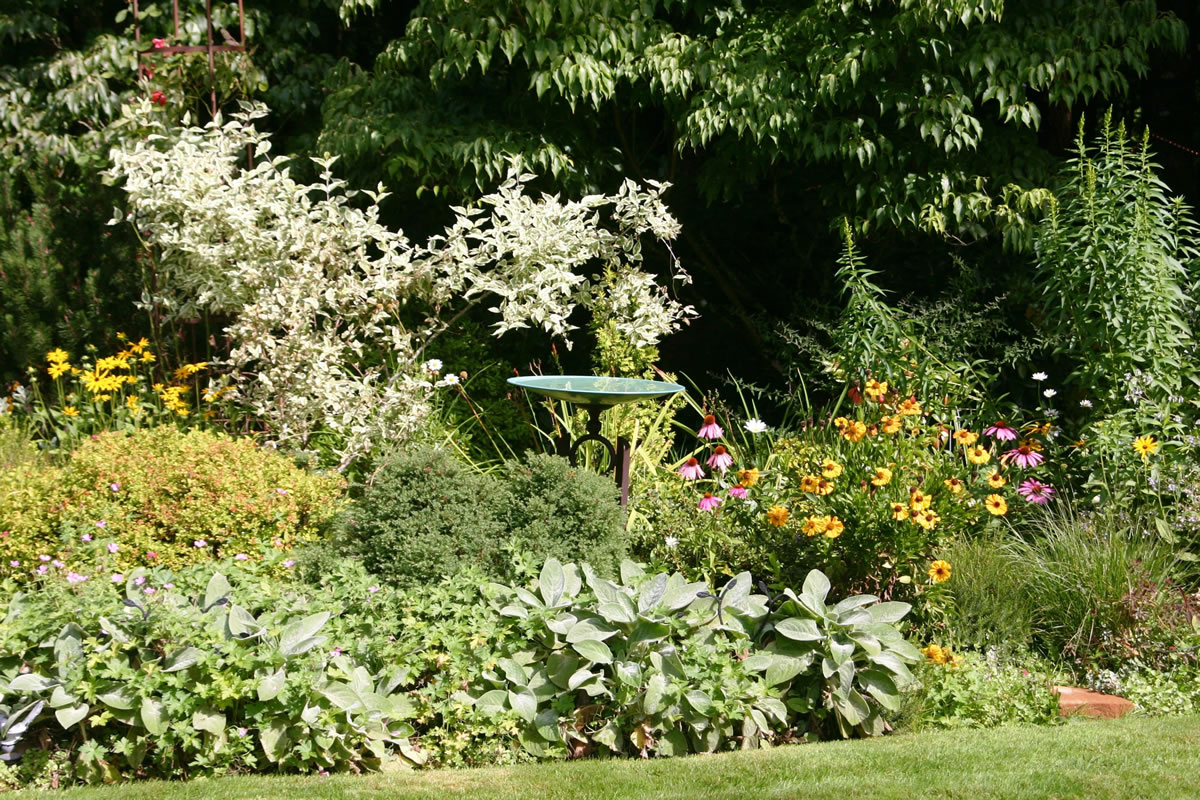Because our climate is actually quite moderate compared to other parts of the country, it’s rare to lose a plant to the severity of the season. The main reason we lose plants is that they are on the edge of hardiness for our climate zone. Yes, nurseries and garden centers sell plants that are not guaranteed to make it through winter in our climate so be sure to check before buying.
We don’t have hurricanes, tornadoes and blizzards. We do have the occasional one- or two-day wind storm. If snow does come, it’s gone in a day or two, rather than freezing in place for the duration of the winter months. Often it’s the rain that melts our snow, revealing lush green lawns the moment the last flake melts away. In much of the United States, lawns die back, lose color and remain brown for the better part of winter.
Even though our lawns are green in winter, they are going through a period of rest and recuperation. The fertilizer we use in autumn should be a slow release type that sustains the grass until spring growth begins. The ideal organic product will have an effect on the soil in which the grass is growing, which is the key to healthy plants of any kind.
I could be wrong but if the weather follows its historical pattern, winter is not over yet. If freezing rain and sleet return, avoid walking on the lawn as much as possible and especially if the grass is frozen or covered in frost. On the next dry, mild day, rake up any debris that has accumulated over winter so your landscape is ready for routine lawn maintenance.
Before spring forces you to get out and work in the garden, turn your attention to the storage area where you keep your tools and garden implements. If you haven’t done so already, clean your tools before starting this year’s yard work. Scrub away dirt and grime with a stiff bristled brush. Rinse and dry before returning them to storage.
Rust can attack tools in every season in the Pacific Northwest so be sure to remove any rust before it affects the integrity of your tools. Once again, use a wire brush or if need be, sandpaper to remove the first signs of rust. While you’re at it sharpen hoes, spades and other metal garden tools. This includes the lawn mower blade and any weeding tools such as hedge trimmers and hand held pruners.
Pollinators are a diverse group of invertebrates, birds and bats and we have them to thank for blooming meadows, healthy fruits and bountiful vegetable gardens. Honeybees have been disappearing in record numbers and they are not the only pollinators that are imperiled. Some butterflies, native bees and bats have also experienced significant population declines.
We all appreciate flowers for their beauty, bright colors and fragrance but the first purpose of flowers is to attract pollinators. Pollination is the transfer of pollen from the anther to the stigma, the male and female organs of a flower. The point of pollination is fertilization. If pollination and fertilization are successful the result is a fertilized egg that may grow into a seed. We need a healthy population of pollinators to guarantee the food supply.
Most scientists say there is probably no single answer to the loss of pollinators. Honeybees are raised commercially but scientists say wild pollinators such as bumblebees and bats seem to be having trouble as well. I recently attended a Garden Writer’s event and one of the featured speakers was Dave Hunter, founder and President of the Orchard Bee Association.
Dave shared a connection to the Home and Garden Seed Association which encourages all home gardeners to help the cause of pollinator protection by planting more flowers, an important food resource for all kinds of bees and butterflies. Although the cause of this issue is in question, there is no doubt that providing flowers in your garden can improve the environment for pollinators.
Here are a few tips from the Home and Garden Seed Association. You can find more information about growing plants from seed at ezfromseed.org.
Flowers clustered in clumps of at least four feet in diameter are more attractive to pollinators than scattered individual flowers.
A succession of flowering plants that lasts from spring through fall will support a range of bee species.
Flowers of different shapes will attract different types of pollinators.
Pesticides are a major threat to insect pollinators.
Robb Rosser is a WSU-certified master gardener. Reach him at Write2Robb@aol.com.



